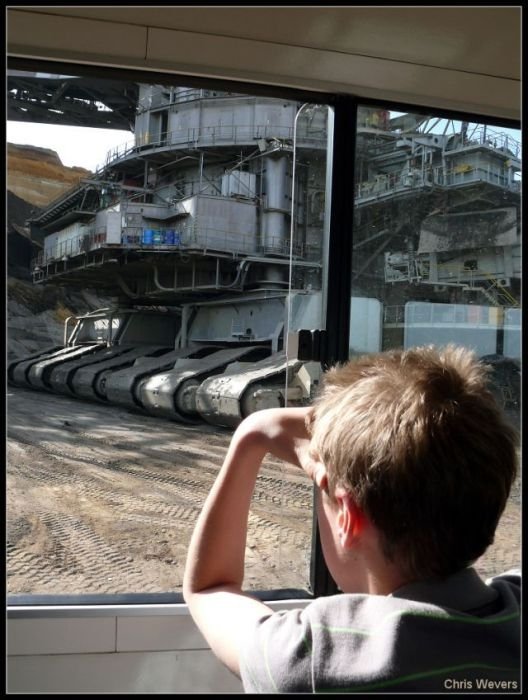|
|
Bagger 288
|
The Bagger 288 (Excavator 288), built by the German company Krupp for the energy and mining firm Rheinbraun, is a bucket-wheel excavator or mobile strip mining machine. When its construction was completed in 1978, Bagger 288 superseded NASA's Crawler-Transporter, used to carry the Space Shuttle and Apollo Saturn V launch vehicle, as the largest tracked vehicle in the world at 13,500 tons. However, the Bagger is powered from an external source and is more correctly described as a mining machine which can be moved, while the crawler-transporter was built as a self-powered, load-carrying vehicle.
The Bagger 288 was built for the job removing overburden prior to coal mining in Tagebau Hambach (stripmine Hambach), Germany. It can excavate 240,000 tons coal or 240,000 cubic metres overburden daily – the equivalent a football field(soccer) dug to 30 m (98 ft) deep. The coal produced in one day fills 2400 coal wagons. The excavator is up to 220 m (721 ft) long and approximately 96 m (315 ft) high. The Bagger's operation requires 16.56 megawatts externally supplied electricity. It can travel 2 to 10 m (6.6 to 33 ft) per minute (0.1 to 0.6 km/h). The chassis the main section is 46 m (151 ft) wide and sits on 3 rows 4 caterpillar track assemblies, each 3.8 m (12 ft) wide. The large surface area the tracks means the ground pressure the Bagger 288 is very small (17.1 N/cm2 or 24.8 psi); this allows the excavator to travel over gravel, earth and even grass without leaving a significant track. It has a minimum turning radius approximately 100 meters, and can climb a maximum gradient 1:18.
|
|









